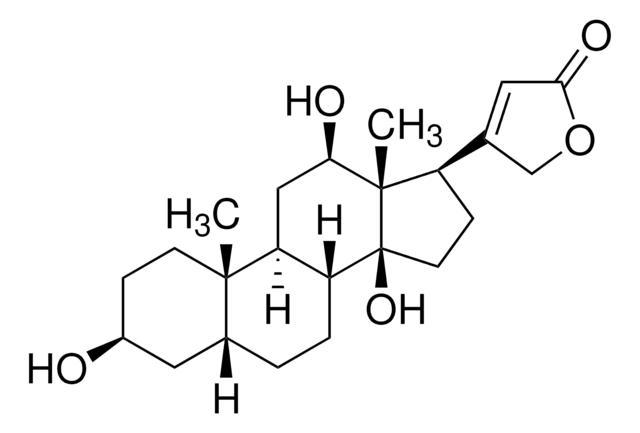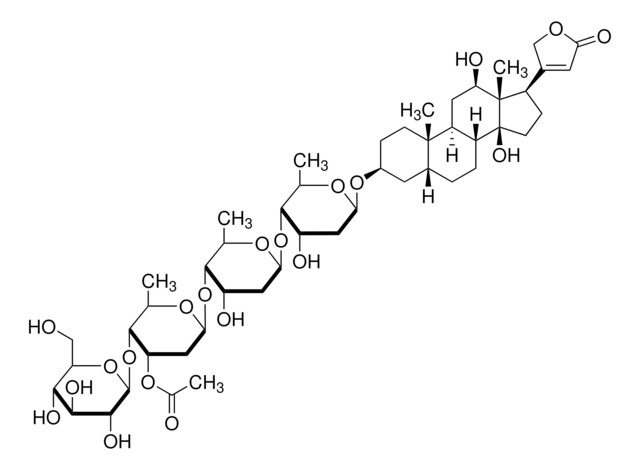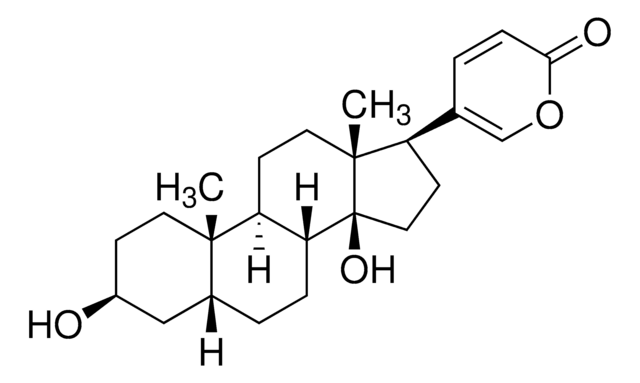D9404
Digitoxigenin
Synonyme(s) :
3β,14-Dihydroxy-5β,20(22)-cardenolide, 3,14,21-Trihydroxy-20(22)-norcholenic acid lactone, 5β,20(22)-Cardenolide-3β,14-diol
About This Item
Produits recommandés
Description
non-ionic
Essai
≥97.0% (TLC)
Forme
powder
Poids mol.
374.51 g/mol
Pf
253 °C (lit.)
Chaîne SMILES
[H][C@]12CC[C@]3([H])[C@]([H])(CC[C@]4(C)[C@]([H])(CC[C@]34O)C5=CC(=O)OC5)[C@@]1(C)CC[C@H](O)C2
InChI
1S/C23H34O4/c1-21-8-5-16(24)12-15(21)3-4-19-18(21)6-9-22(2)17(7-10-23(19,22)26)14-11-20(25)27-13-14/h11,15-19,24,26H,3-10,12-13H2,1-2H3/t15-,16+,17-,18+,19-,21+,22-,23+/m1/s1
Clé InChI
XZTUSOXSLKTKJQ-CESUGQOBSA-N
Informations sur le gène
rat ... Atp1a1(24211)
Vous recherchez des produits similaires ? Visite Guide de comparaison des produits
Catégories apparentées
Description générale
Mention d'avertissement
Danger
Mentions de danger
Conseils de prudence
Classification des risques
Acute Tox. 2 Oral
Code de la classe de stockage
6.1A - Combustible acute toxic Cat. 1 and 2 / very toxic hazardous materials
Classe de danger pour l'eau (WGK)
WGK 3
Équipement de protection individuelle
Eyeshields, Faceshields, Gloves, type P2 (EN 143) respirator cartridges
Faites votre choix parmi les versions les plus récentes :
Certificats d'analyse (COA)
Vous ne trouvez pas la bonne version ?
Si vous avez besoin d'une version particulière, vous pouvez rechercher un certificat spécifique par le numéro de lot.
Déjà en possession de ce produit ?
Retrouvez la documentation relative aux produits que vous avez récemment achetés dans la Bibliothèque de documents.
Les clients ont également consulté
Active Filters
Notre équipe de scientifiques dispose d'une expérience dans tous les secteurs de la recherche, notamment en sciences de la vie, science des matériaux, synthèse chimique, chromatographie, analyse et dans de nombreux autres domaines..
Contacter notre Service technique










